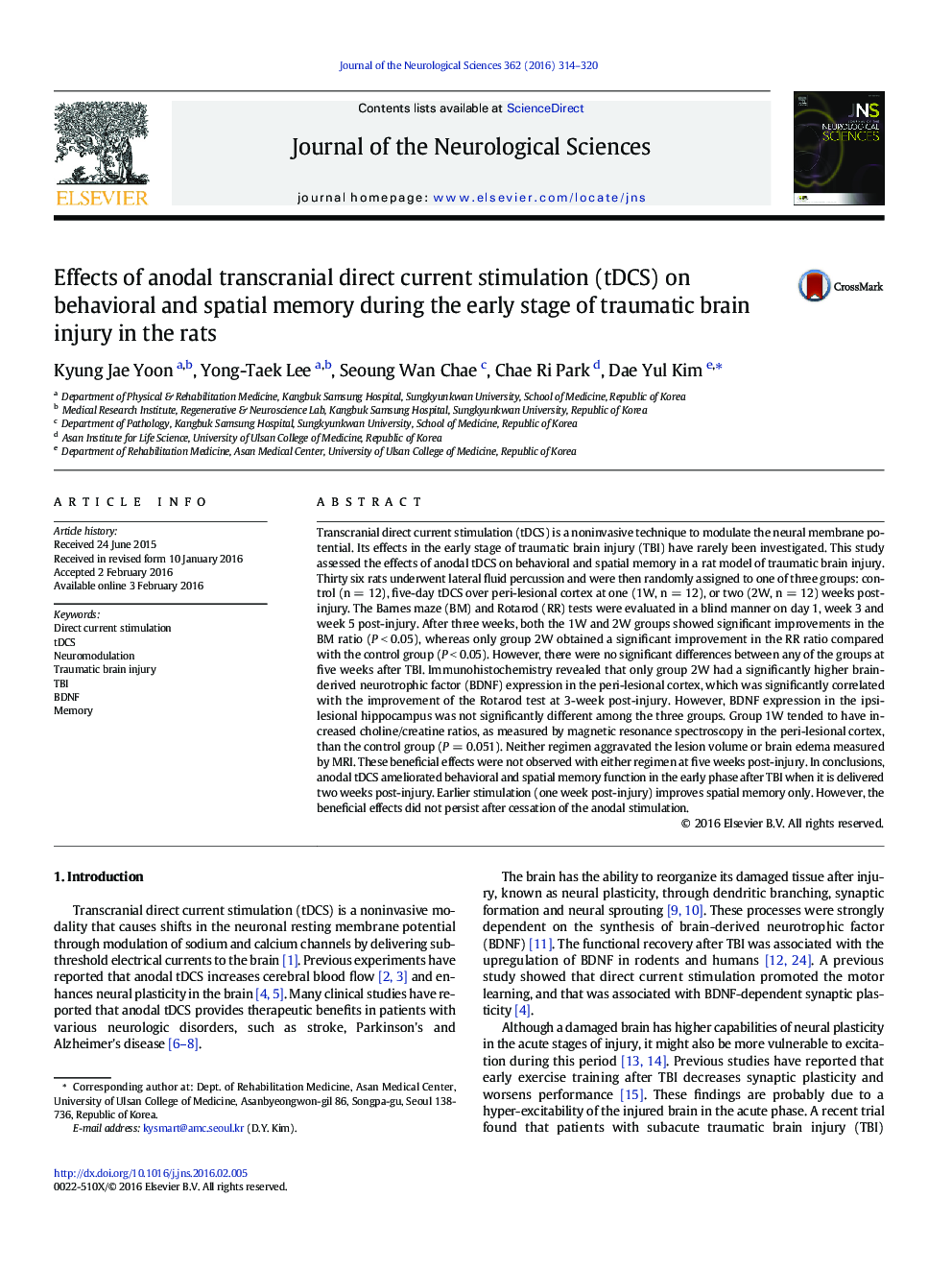| کد مقاله | کد نشریه | سال انتشار | مقاله انگلیسی | نسخه تمام متن |
|---|---|---|---|---|
| 1913074 | 1535100 | 2016 | 7 صفحه PDF | دانلود رایگان |

• Anodal tDCS delivered two weeks post-TBI (delayed stimulation) ameliorated behavioral and spatial memory functions.
• Behavioral improvement of delayed stimulation was correlated with BDNF expression in the peri-lesional cortex.
• Earlier stimulation (one week post-injury) improved spatial memory only.
• Beneficial effects did not persist after cessation of the anodal stimulation.
Transcranial direct current stimulation (tDCS) is a noninvasive technique to modulate the neural membrane potential. Its effects in the early stage of traumatic brain injury (TBI) have rarely been investigated. This study assessed the effects of anodal tDCS on behavioral and spatial memory in a rat model of traumatic brain injury. Thirty six rats underwent lateral fluid percussion and were then randomly assigned to one of three groups: control (n = 12), five-day tDCS over peri-lesional cortex at one (1W, n = 12), or two (2W, n = 12) weeks post-injury. The Barnes maze (BM) and Rotarod (RR) tests were evaluated in a blind manner on day 1, week 3 and week 5 post-injury. After three weeks, both the 1W and 2W groups showed significant improvements in the BM ratio (P < 0.05), whereas only group 2W obtained a significant improvement in the RR ratio compared with the control group (P < 0.05). However, there were no significant differences between any of the groups at five weeks after TBI. Immunohistochemistry revealed that only group 2W had a significantly higher brain-derived neurotrophic factor (BDNF) expression in the peri-lesional cortex, which was significantly correlated with the improvement of the Rotarod test at 3-week post-injury. However, BDNF expression in the ipsi-lesional hippocampus was not significantly different among the three groups. Group 1W tended to have increased choline/creatine ratios, as measured by magnetic resonance spectroscopy in the peri-lesional cortex, than the control group (P = 0.051). Neither regimen aggravated the lesion volume or brain edema measured by MRI. These beneficial effects were not observed with either regimen at five weeks post-injury. In conclusions, anodal tDCS ameliorated behavioral and spatial memory function in the early phase after TBI when it is delivered two weeks post-injury. Earlier stimulation (one week post-injury) improves spatial memory only. However, the beneficial effects did not persist after cessation of the anodal stimulation.
Journal: Journal of the Neurological Sciences - Volume 362, 15 March 2016, Pages 314–320